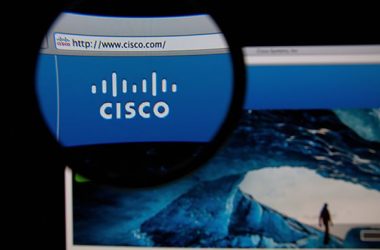 Forbes recently published an interesting article written by Ed Sperling titled “CIOs: Be Careful What You Wish For.” In it, Sperling opined that virtualisation will cause a shift for IT leadership from technology to data.
Forbes recently published an interesting article written by Ed Sperling titled “CIOs: Be Careful What You Wish For.” In it, Sperling opined that virtualisation will cause a shift for IT leadership from technology to data.
“The virtualisation being implemented everywhere will give way to cloud computing, and cloud computing will unclutter technology to the point where the focus will migrate from technology to data,” he wrote.
“IT is still a facilitator of the business, but increasingly the CIO will be responsible for generating ideas by understanding the value of the data and how it can be used to boost revenue,” added Sperling.
I think Sperling is right on the trend, but underestimates its effect — though the underestimation is completely understandable.
The fact is that the two trends are converging to create a deluge of data well beyond what most observers can comprehend, and will shape a very different CIO of the future.
As Sperling noted the first of these trends is cloud computing itself.
One dimension of cloud computing is the abstraction of computing service from underlying hardware — the uncluttering of technology. Just the reduced friction of obtaining computing resources will increase the use of computing technology — enormously. Most of the current discussion about cloud computing fails to understand the gigantic deluge of computing demand that will be unleashed when the convenience factor of this computing mode begins to be comprehended.
Today’s backlog is but a fraction of the true unmet desire for computing. Given the hassle and expense of getting an application implemented, only the most attractive opportunities get into the discussion and competition for IT resources. In the near future, much — much — more demand for applications will surface, made overt by the recognition of the reduced barriers to IT resources made possible by cloud computing.
One might even say that our understanding of the likely size of computing, based on today’s practices, is the tip of the iceberg. In the next few years, we will see the current unseen remainder of the iceberg.
It goes without saying that every one of the those applications will generate and consume data.
The second factor that will cause IT organisations to be inundated by data is the growth of the “Internet of Things.”
This catchphrase describes the fact that computing, based on the exponential dropping in the cost of computing, is increasingly being moved into non-traditional devices. The most obvious is the rise of smart phones — though a better way to describe them would be as voice-enabled computers. But smartphones — as powerful and widespread as they are — are only the latest beachhead for computing.
The fact is, the history of computing has inexorably been in one direction — the movement of processing power into smaller devices. Every generation of computing has represented the then-current best balance of small practical form factor and economic viability. The rise of minicomputers came because the cost of processing dropped to the point that it could be economically delivered in standalone cabinets that didn’t require raised flooring. Personal computers took advantage of the reduced cost of processors and peripherals to create a package that could be easily carried in two hands. Later, the notebook form factor extended the computing framework of the PC to a highly portable device. Tablets are, of course, the latest development in this trend. Today, we have the smart phone.
A commonality among all of this type of computing device is they are designed for human interaction.
Tomorrow, however, computing will move into devices that no human interacts with — and, increasingly, the devices will interact with one another. One category of these devices will be sensors — devices that monitor and report on a process or state. Another category will be actuators — devices that operate on something, based on inputs (think drapes that automatically are raised and lowered in response to the sun’s movement through the skies. Unlike the general purpose, human-focused computing devices described above, these will be specialized devices, designed to implement a single purpose.
As the cost of computing, driven by Moore’s Law, continues to plummet, this mode of computing will explode. How big an explosion?
Well, the CEO of Ericsson (ERIC) believes that there will be 50 billion connected devices by 2020. But that pales in comparison to the estimate of Cisco’s CTO, Padmasree Warrior, who believes there will be 1 trillion Internet-connected devices by 2013. Warrior may be overly optimistic in terms of timeframe, but if one were to make a bet on accuracy, it’s likely that Warrior’s number will be closer to the truth when we get to 2020.
The simple fact is that everyone — and that includes (perhaps especially includes) those of us in the technology industry — underestimates the growth of ever-cheaper computing devices.
To quote one industry luminary, later hoisted on his own petard, Ken Olsen, “There is no reason for any individual to have a computer in his home.” Olsen now is laughed at for such an attitude, but the fact is, for the reality of the market as he saw it at the time, it was completely appropriate. But he completely missed how the market exploded once the reduced cost of personal computing enabled entire new uses for computers — I mean, after all, who could have imagined collaborating with people spread around the world in competing with other teams in a role-based graphical online game?
So I’m not trying to criticise Sperling as much as acknowledge that all of us fail to understand the implications cloud computing will bring to IT.
He is dead on with respect to the looming cascade of data IT organisations will confront. I do disagree with him, however, in his prescription for how CIOs should respond to that data cascade.
I don’t believe the role of a CIO is to design business initiatives that leverage that data. It’s unlikely that a CIO can have anywhere near the daily interaction with the market that people placed in sales, marketing, and product development can. They’re the ones who can create new business initiatives that leverage data — once they comprehend the possibilities that data offers.
Rather than design business initiatives, what the CIO should do is to make that data available and help those other organisations understand what can be done with it. While it is difficult for CIOs to have the market sensitivity that those organisations have, it is near impossible for their members to appreciate, without assistance, what can be done with the data resources becoming available. What are some ways that CIOs can assist their colleagues in understanding and leveraging that data?
Make the data available. The Open Government Data movement illustrates the power of making data available via open interfaces and different types of feeds. One can’t possibly know the ways data can be leveraged, so rather than trying to figure it out, make the data available and let others figure it out. Yes, yes, there are security and privacy issues to sort out, but if the Department of Defence (can sort through this, it’s not an impossible task.
Build scalable architectures. Easy data availability that enables end-user applications means that it’s much harder to forecast load. Make sure that the applications that support data availability can handle at least 10X forecast (which, since this is cloud-based, should be much easier, right?).
Look to new storage paradigms. As wonderful as storage vendors are, at some point, the economics of the traditional storage array become untenable. Amazon’s S3 is increasingly becoming a standard mode of large-scale storage and, with the company’s announcement that it now supports 5 TB objects, will become even more so in the future. Netflix uses S3 for its video streaming, so it should be robust enough for you. In the future, other storage offerings from other cloud providers will also be available, providing other options for cloud storage.
Find success stories. While the three previous recommendations are focused on traditional IT responsibilities, this one is more about the relationship between the CIO and business units. Instead of advocating that business units leverage all this wonderful data, present case studies. Nothing is more powerful than a real-world example in getting people’s imagination going, so prime the pump with some case studies. Even more powerful, find some examples from outside your company and have people involved with those projects come and present to a joint IT/business unit gathering. A joint viewing of what other people are accomplishing is often the most powerful goad to focused collaboration.
The ease of cloud computing and the explosion of computing devices means that the nature of IT is going to change dramatically. One can try and mash the new computing format into the traditional box of enterprise IT, or one can recognise the need for new tools and practices. Ken Olsen’s example indicates that one is better served in keeping one’s eyes on the horizon rather than the well-trod ground at one’s feet.





